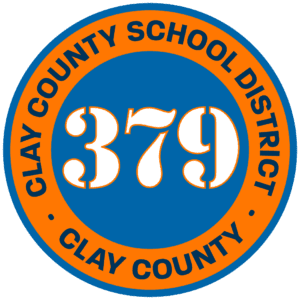Nightly at 8 pm, passersby can hear the brassy sound of a trumpet. Swinging from note to high-pitched note until the tune is complete is CL Snodgrass, lifelong and well-known musician. He’s playing taps, the well-known military bugle that signals “lights out” to the masses.
Neighbors in the 500 block of Washington can hear him nightly, while those even blocks away get a whisper, depending on the direction of the wind.
Snodgrass said he started the tradition in 2023 and has continued for more than a year. On Thursdays, while he’s teaching music lessons out of town, Phil Kasper takes over. About a block southeast (as the crow flies), the tradition continues.
Kasper, a former music student of Snodgrass’s, said he also fills in if Snodgrass is sick or on vacation. Even if he’s not home, he’ll take his trumpet with him so that taps can continue, regardless of the location.

“Just so we can keep it going,” he said. “I step out the back door or do it wherever I happen to be. It’s gotten to be a cool thing; I think people look forward to it.” Adding that their neighbors get to hear the song nightly whether they want it or not, he laughed.
The pair first began playing the song out of their homes in 2020 during Taps Across America on Memorial Day. The movement had musicians play the song at 3 pm in their respective time zones. From there, Snodgrass continued to play the song but often missed nights. Then he recruited Kasper to help, and the streak has gone uninterrupted since May 30th of 2023.
“I just decided to do Taps at 8,” he said. “Just where I was and there were people around and they enjoyed it so I decided to keep doing it.”
Snodgrass said the song sometimes draws a crowd. Walkers will stop and others will drive down the alley and park. Kasper said the same, that sometimes people will ask where to park.
“Some people get enjoyment out of it and that’s good, that’s what I do it for,” he said. “And it also keeps me practicing. I sound better than I did a year and a half ago.”
If it’s not played in the neighborhood, Kasper said he will receive texts asking if he forgot.
“We never forget,” he said. “It takes up about 30 seconds of your life and I think people would miss it.”
Annually, Snodgrass said he plays the song a few times a year at military funerals. But while serving in the Navy, it was part of his daily responsibilities. For two years in Newfoundland, it was played every night – more than 700 times.
Then when he was transferred to Brooklyn, Snodgrass said he was glad to have a break from the song. However, he was told he would play until the new trumpet player arrived, and he was booked for military funerals across New York City.
Kasper, who served in the Air Force, also played with the drum and bugle corps.
“I haven’t counted the number of times I’ve played it, but it’s a lot,” Snodgrass said. “It’s something I have great respect for.”
A Brief History of Taps
A French Bugle tune, called Tattoo, was played nightly during the Civil War to signal “lights out” to Union infantrymen. Believing the song too formal – the original was somber and more than a minute long – Major General Daniel Adams Butterfield asked the brigade bugler, Oliver Willcox Norton, to adjust the song to its current 24 notes. This was July of 1862.
Norton reported that Butterfield wrote out the music for him and ad him play it, then made adjustments to note lengths until he was satisfied. That night, Norton played the tune. A still night, it was heard for miles and buglers from other brigades visited the next day asking for the music. The song began to spread across the Army.
The earliest it was recorded for use in military funerals was in the U.S. Army Infantry Drill Regulations for 1891.
Two theories exist for the origin of the name, Taps. One says it likely came from the Dutch word for “taptoe,” a translation from the original song’s title, Tattoo. Another theory says it came from three drum taps, which was the signal for “extinguish lights” when a bugle was not in use.
Images: above, Phil Kasper plays on his front porch, CL Snodgrass waits for 8 pm to play his trumpet on his back stairs. Video: Snodgrass’s dog, Ella, sings along as he plays.













